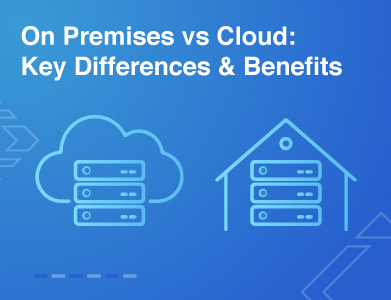A web app that works smoothly across all devices—whether it’s a laptop, tablet, or phone—is no longer just a "nice-to-have." It’s a must. With over 7 billion mobile users globally, making sure your app looks good and works great on mobile is crucial to staying competitive and reaching more customers.
However, you don’t need to be a tech expert to understand the basics of building a progressive & responsive application. Whether you’ve dabbled in coding before or this is all new to you, we’re here to break it down in the simplest way.
Why Do Responsive Web Apps Matter?
If you’ve ever visited a website on your phone and had to zoom in and out just to click a button, you already know the importance of responsive application. The more seamless and user-friendly your web app is, the better chance you have of keeping visitors engaged. And let's be honest—no one has the time to mess around with clunky, unresponsive sites.
Responsive web apps adjust themselves automatically based on the user’s screen size. So, whether someone is checking out your app on their phone or desktop, the experience stays smooth. For startups, this means you save time and money because you only need to build one version of your app that works everywhere. It also gives you an SEO boost, which is huge for visibility.
How to make responsive design using HTML, CSS, and JavaScript
So, how do you go about building this sleek, responsive app? Meet your new best friends: HTML, CSS, and JavaScript. These web technologies work together to create the foundation, design, and functionality of your app.
HTML: The Backbone of Your Web App
HTML is the structure of your app. It organizes your content—think headers, navigation, and images—so everything is in the right place. It’s also great for SEO because it makes it easier for search engines to understand your site.
Here's a quick example of how HTML works:
<header>
<h1>Welcome to My Startup</h1></header>
<nav>
<ul><li><a href="#home">Home</a></li><li><a href="#about">About Us</a></li>
</ul>
</nav>
CSS: The Visual Side of Things
Next up is CSS. This is where you get to play around with how your web app looks. You can adjust things like colors, fonts, layouts, and even create cool animations. CSS helps ensure that your app isn’t just functional, but also visually appealing on all devices.
One of the features of CSS is media queries, which let your design adapt to different screen sizes:
CSS
/* For desktops */
body {
font-size: 18px;
padding: 20px;
}
/* For mobile */ @media (max-width: 768px) {
body {
font-size: 16px;
padding: 10px;
}
This simple code ensures that your app looks just as good on a phone as it does on a big screen.
JavaScript: Adding Interactivity
Lastly, JavaScript is where things get fun. It brings your app to life by adding interactivity. Want to create a button that changes color when clicked? Or a form that checks if all fields are filled out before submission? JavaScript has your back.
A Step-by-Step Guide on How to Make Responsive Web Design
Let’s dive into how you can build a web responsive app step by step.
Step 1: Define the Purpose of Your App
Start with the basics: what problem does your app solve? Who are your users? Having a clear goal in mind will make the rest of the process smoother.
Step 2: Plan Your App’s Design
Before writing any code, sketch out a basic wireframe. Where will your buttons go? How will users navigate your app? Keeping the user experience in mind at this stage is key. A simple, intuitive design is often more effective than a fancy, complicated one. You can use tools like Balsamiq to create the wireframe for your app.
Step 3: Build the Structure with HTML
Once you’ve mapped out your design, use HTML to structure your app. Focus on creating clean, semantic code. This will not only make your app easier to maintain but will also improve your SEO ranking.
Step 4: Style with CSS
Use CSS to make your app look great. This is where you can let your brand’s personality shine through, whether that’s with bold colors or sleek typography. Don’t forget to use media queries to ensure your responsive web application adapts to different screen sizes.
Step 5: Add Interactivity with JavaScript
Use JavaScript to add the dynamic features that make your app interactive. Whether it’s validating form inputs or creating a clickable menu, JavaScript gives you the flexibility to make your app more engaging.
Step 6: Optimize for Mobile
Mobile optimization is essential. CSS framework like Bootstrap can help ensure your app is mobile-first. Make sure to compress images and reduce file sizes to keep loading times fast—no one likes waiting for a slow site.
Step 7: Test and Debug
After building your app, test it across multiple devices and browsers. Tools like Google Chrome Dev Tools can help you spot issues early and fix them before your users ever see them.
Step 8: Launch and Maintain
Once everything looks good, it’s time to deploy your app. You can host it on platforms like AWS or Google Cloud and keep an eye on it for any necessary updates or security patches.
Performance Optimization: Make it Fast and Smooth
No one sticks around for a slow website. Performance optimization is crucial to keeping your users happy. Here are a few tips:
· Minimize HTTP requests to reduce load times.
· Compress images and files to make them load faster.
· Use caching to improve speed for returning visitors.
Tools like Java Melody can help you track performance and make necessary tweaks.
Integrating ChatGPT for an Enhanced User Experience
If you want to take things up a notch, consider integrating AI tools like ChatGPT into your web app. Whether it’s for answering common user questions or providing real-time support, AI integration can make your app feel more personalized and responsive.
Here's How You can integrate ChatGPT
1. Get an API Key from OpenAI.
2. Set up your environment using Python or JavaScript.
3. Send API requests to get real-time responses from ChatGPT.
For example, in JavaScript, it looks like this:
const { Configuration, OpenAIApi } = require("openai");
const configuration = new Configuration({
apiKey: "YOUR_API_KEY",
});
const openai = new OpenAIApi(configuration);
async function getResponse() {
const response = await openai.createChatCompletion({
model: "gpt-3.5-turbo",
messages: [{ role: "user", content: "How can I help you today?" }],
});
console.log(response.data.choices[0].message.content);
}
getResponse();
This can be a great way to add a personal touch to your app, providing users with instant, tailored assistance.
Final Thoughts
Building a web responsive app might seem like a big project but breaking it down step by step makes it more manageable. HTML, CSS, and JavaScript are powerful tools that can help you create an app that’s both functional and user-friendly across all devices.
If this all still feels a bit overwhelming, don’t hesitate to reach out.
At Prioxis, we specialize in building custom, responsive web applications that are designed to grow with your business. Whether you’re just getting started or need help scaling your responsive web application, our team can handle everything from development to deployment and ongoing support.
Reach out to us today, and let’s build something great together!










